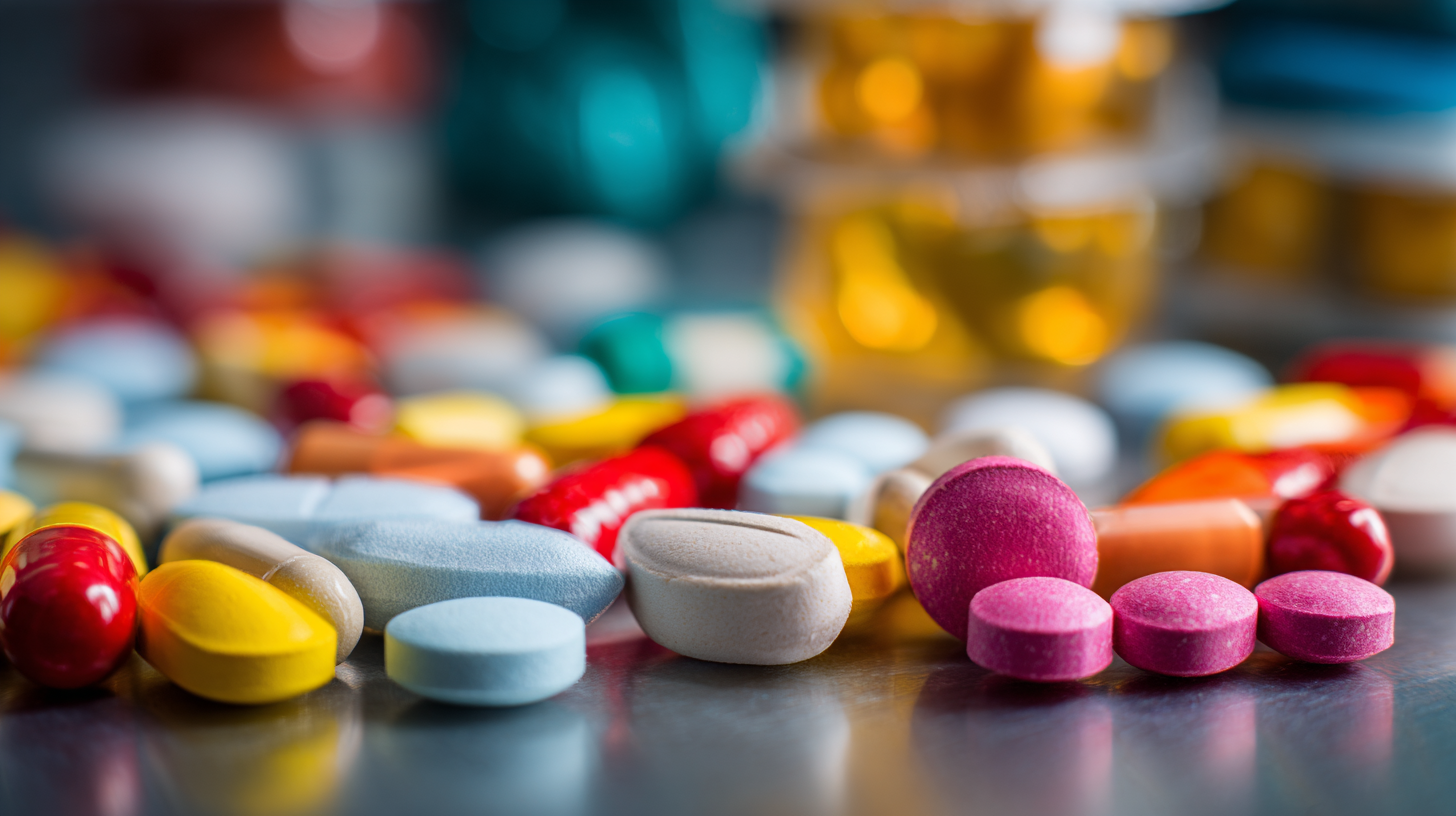In the ever-evolving pharmaceutical landscape, API drugs, or Active Pharmaceutical Ingredients, play a pivotal role in the development and manufacturing of medications that ensure patient safety and efficacy. According to a 2022 report by Grand View Research, the global API market is projected to reach USD 257.9 billion by 2030, showcasing a significant compound annual growth rate (CAGR) of 6.9% from 2022. This surge is driven by the increasing demand for generic drugs, the expansion of biologics, and the rising prevalence of chronic diseases. As industry professionals navigate this complex environment, understanding the top strategies for managing API drug production, quality control, and regulatory compliance becomes crucial. This guide serves to provide key insights and practical approaches that can help stakeholders optimize their operations, mitigate risks, and ultimately enhance the delivery of safe and effective medicinal therapies.

The API drug market is experiencing significant dynamics as it continues to evolve amidst growing global demand. According to insights from market analyses, the global pharmaceutical-grade sodium bicarbonate market is projected to grow from $245.56 million in 2025 to $334.82 million by 2033, demonstrating a compound annual growth rate (CAGR) of 4.0%. This growth is indicative of broader trends within the pharmaceutical sector, where regulatory support and innovative developments are essential for driving industry advancements.
Regionally, the Chinese API industry is grappling with challenges such as price drops and intensified market competition in 2023. Despite these hurdles, national policies are advocating for high-quality development while encouraging transformation and combating non-compliant practices. Furthermore, the CMO/CDMO sector in China is projected to expand rapidly from a market size of approximately 646 billion yuan in 2023 to an estimated 1,627 billion yuan by 2029, driven by supportive governmental initiatives and a burgeoning biopharmaceutical landscape.
As for emerging products, the anionic exchange membrane market is set to see substantial growth, increasing from $22.2 million in 2025 to an expected $54.058 million by 2033 at a CAGR of 6.8%. This reflects the growing necessity for advanced materials across various applications, indicating robust opportunities for industry professionals navigating this complex and promising market.
| Market Segment | Estimated Market Size (USD Billion) | Growth Rate (CAGR %) | Key Trends |
|---|---|---|---|
| Generic API | 45.2 | 7.5 | Increased adoption of generics, patent expirations |
| Branded API | 30.1 | 5.8 | R&D investment, high margins |
| Biotech API | 25.7 | 9.1 | Advancements in biotechnology, specificity |
| Contract Manufacturing API | 15.3 | 6.7 | Outsourcing trends, cost efficiency |
| CDMO API | 10.0 | 8.3 | Increased focus on innovation and flexibility |
The landscape of Active Pharmaceutical Ingredient (API) drug development is riddled with regulatory challenges that industry professionals must navigate to ensure compliance and maintain the integrity of their products. According to a report from the World Health Organization, an estimated 70% of API manufacturers face significant hurdles in meeting regulatory standards, particularly in emerging markets. These challenges range from stringent quality control requirements to the complexities of varying international regulations, impacting timelines and costs.

Moreover, the U.S. FDA's stringent guidelines necessitate that API manufacturers maintain robust documentation and demonstrate adherence to Good Manufacturing Practices (GMP). A recent analysis by IQVIA highlights that non-compliance can result in substantial financial penalties, with fines reaching up to $2 million for violations. As companies grapple with these hurdles, investment in advanced compliance technologies is becoming essential, as evidenced by a 30% increase in the market for regulatory software solutions within the pharmaceutical sector over the past five years. Understanding and overcoming these regulatory challenges is critical for professionals aiming to navigate the intricate world of API drugs effectively.
In the evolving landscape of pharmaceuticals, the integration of technology into Active Pharmaceutical Ingredient (API) manufacturing is proving to be transformative. Innovations such as AI-driven drug discovery and automation in manufacturing processes are not only streamlining the development cycle but also enhancing precision and quality control. For instance, AI systems are now capable of predicting defects in production, significantly reducing waste and increasing efficiency. This technological shift allows pharmaceutical companies to respond more dynamically to market demands, which is crucial in a climate of global supply chain uncertainties.
Moreover, the recent focus on localizing pharmaceutical manufacturing—exemplified by Egypt's ambitious initiatives and the establishment of critical production centers in Canada—highlights a growing trend toward self-sufficiency. As countries seek to bolster their pharmaceutical infrastructure, the adoption of advanced technologies becomes essential. Automation and robotics are facilitating improved output while meeting stringent regulatory standards. These advancements not only promise to onshore production capabilities but also empower smaller companies and startups to compete effectively in an increasingly crowded market, indicating a significant shift in the industry’s operational paradigm.
As the pharmaceutical landscape evolves, market access strategies for Active Pharmaceutical Ingredient (API) drugs have taken center stage. Navigating the complexities of distribution networks and forging strategic partnerships are crucial for industry professionals looking to enhance their market footprint.
The rising demand for API drugs has prompted an increase in collaboration between pharmaceutical companies and Contract Development and Manufacturing Organizations (CDMOs). This synergy not only optimizes production efficiencies but also accelerates the time-to-market for crucial medications.
The global CDMO market is projected to reach an impressive $465.24 billion by 2032, highlighting the significant role these partnerships play in the pharmaceutical ecosystem.
With the ongoing trend towards advancing access and affordability, leveraging CDMO capabilities allows pharma companies to adapt to changing market dynamics and regulatory demands. The biotech API manufacturing sector, valued at $38.9 billion in 2022, is expected to grow at a robust rate, further emphasizing the importance of strategic alliances in achieving sustainable growth and maximizing patient access to vital therapies.
The global landscape of Active Pharmaceutical Ingredients (API) is intricately linked to supply chain dynamics, which are currently undergoing significant transformations. According to a recent report by Grand View Research, the global API market is expected to reach USD 246.6 billion by 2026, growing at a CAGR of 6.8%. This growth is primarily driven by the increasing demand for generic drugs and the rising prevalence of chronic diseases. However, the availability and pricing of API drugs are heavily influenced by the robustness of global supply chains, which have faced unprecedented challenges in recent years.

The COVID-19 pandemic underscored vulnerabilities in international supply chains, leading to substantial delays and shortages in API availability. A McKinsey report highlights that over 75% of the world's APIs are manufactured in Asia, particularly in India and China. Disruptions in these regions have had a cascading effect, affecting the production timelines and costs associated with finished pharmaceutical goods. As the industry moves forward, understanding and mitigating risks associated with supply chain dependencies will be paramount. Additionally, the increasing trend towards regionalization and diversification of suppliers could reshape the pricing dynamics, providing companies with a more resilient framework to navigate future uncertainties.